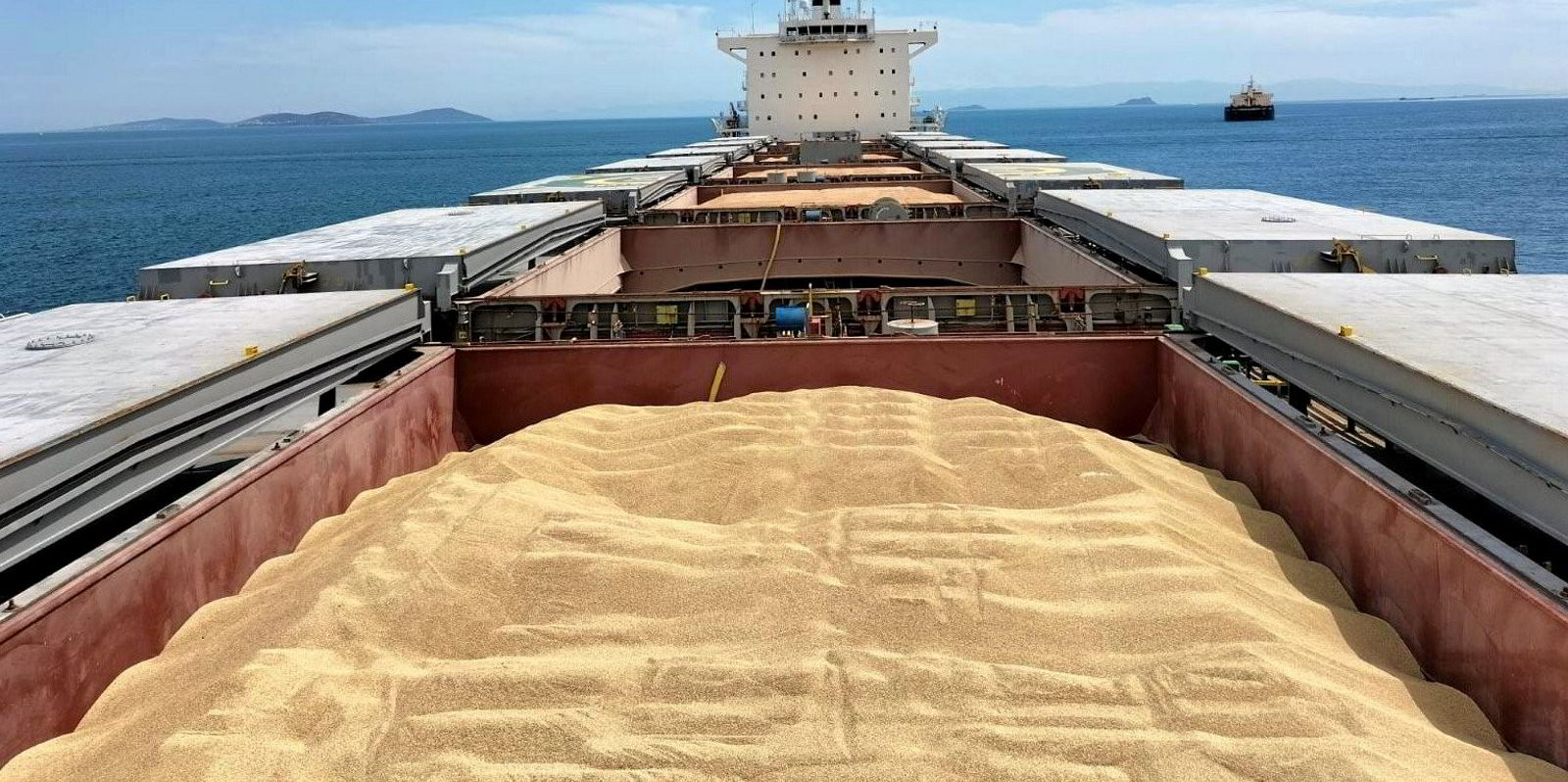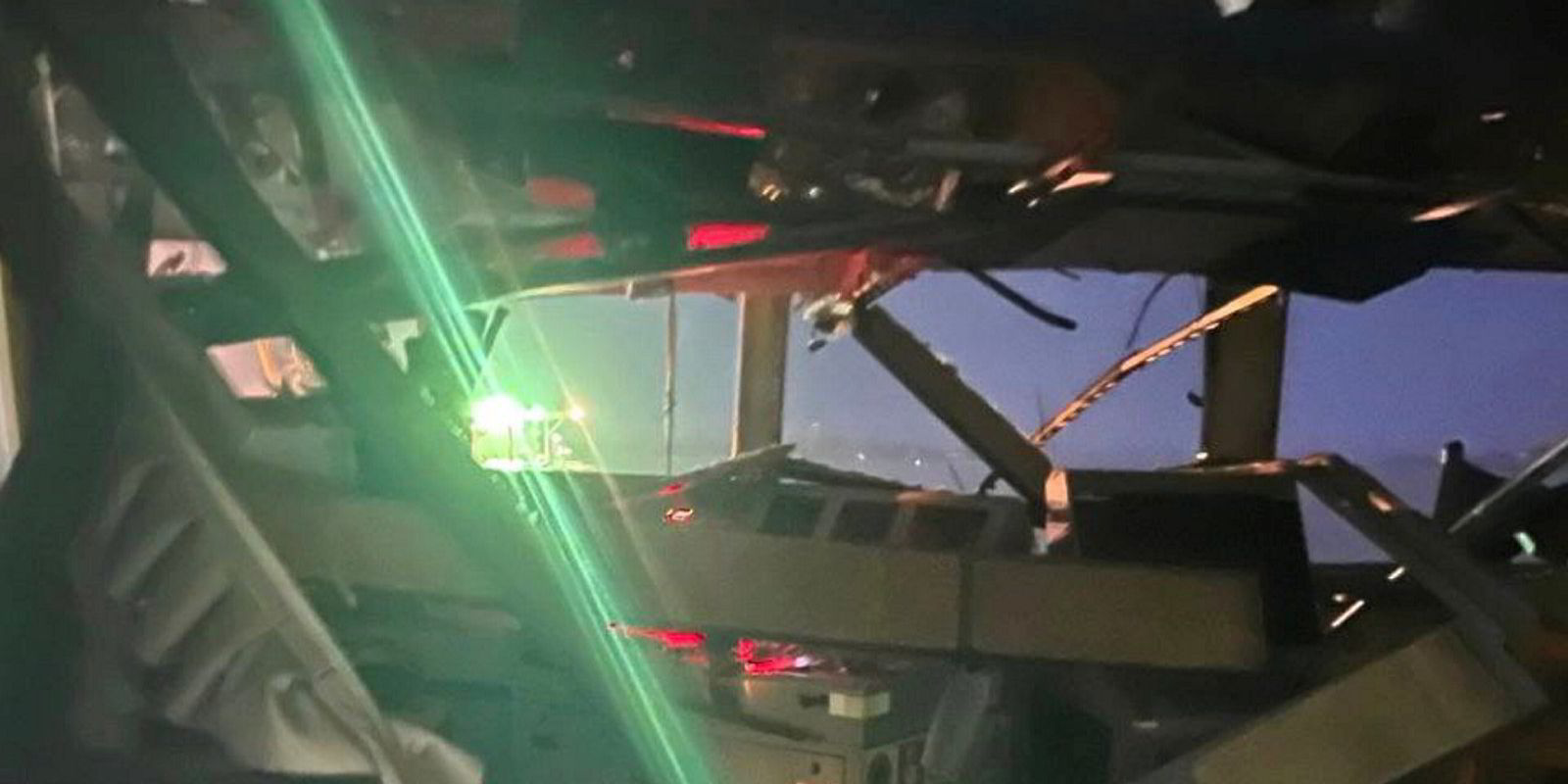An agreement reached on Tuesday with the London market to insure Ukraine’s seaborne exports is bigger in size but smaller in scope than initially believed.
The Kyiv government said on 14 November that the mechanism had a volume of $50m, as TradeWinds already reported.
A key player involved in the scheme, however, said there are actually two $50m packages that apply separately to hull and liability insurance.
“It’s $100m … hull up to $50m and then the equivalent amount in P&I,” said Marcus Baker, global head of marine, cargo & logistics at insurance broker Marsh McLennan, which was instrumental in arranging the deal alongside Lloyd’s of London.
The coverage, on the other hand, extends to exports of agricultural commodities only, essentially grain.
That means vessels carrying iron ore, such as the 91,900-dwt Kmax Ruler (built 2009), which was hit by a missile in Yuzhnyy/Pivdennyi last week, leaving a pilot dead and the ship seriously damaged, would probably not be covered.
The definition of “grain and agricultural products” set out in the new insurance package could probably be stretched to include agriculture-related machinery and equipment, but not commoditised iron ore material shipped out of Ukraine.
“We’re going to have to be careful as to what does and doesn’t go up in the corridor … the main thing is to get grain out of Ukraine,” said Baker.
The deal, announced on 14 November, is the culmination of months of talks first reported by TradeWinds on 21 August.
“This has been like the gestation of an elephant,” said Baker, pointing to the innovative nature of the deal.
“What we’re doing is pretty unique, there was a huge amount of complexity.”
Under the agreement, Ukraine will bear the first portion of potential claims, with the private market jumping in to pick up the rest. No details were disclosed on the exact breakdown of the exposure.
Letters of credit from Ukrainian state banks Ukreximbank and Ukrgasbank will be the collateral. Germany’s DZ Bank serves as a middleman to vouch for the collateral’s quality with foreign insurers.
Fourteen different insurers take part in the facility, which is open to all shipowners.
The announcement of the package has not been influenced by the Kmax Ruler incident.
However, it comes at an opportune moment to help lower war risk insurance costs, which soared in the wake of the missile strike, putting a dampener on the hitherto smooth operation of Ukraine’s new grain corridor.
Shipowners contacted by TradeWinds on Wednesday said some insurers were quoting war risk rates of up to 3.5% of ship value after the Kmax Ruler attack — at least 50% up from before 8 November and between three and four times the cost for vessels that were travelling in the United Nations-protected Ukraine corridor that came to a halt in July.
Baker is optimistic that the insurance package announced this week will help lower this considerably.
“We’re looking to put some significant reduction to those rates. I would expect them to be at least half of what they are,” he said.
Ukrainian government officials harbour the same hope.
“This initiative will notably slash current insurance costs,” economy minister Yulia Svyrydenko tweeted on X.
With more than 100 bulkers of all sizes carrying more than 4m tonnes of grain and metal products out of Odesa, Chornomorsk and Yuzhnyy/Pivdennyi so far, the Kyiv-protected corridor has already surpassed expectations.
Russian superiority in the air combined with weak Ukrainian air defences, however, remains a risk for commercial shipping in the area.
“The risk environment is going to change every day,” said Baker.






